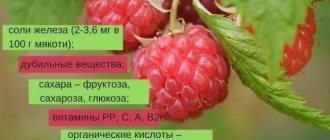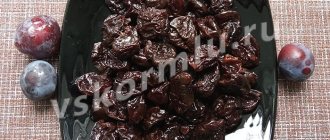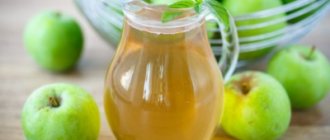Breastfeeding is an important period in the life of mother and baby. A nursing mother must follow a special diet so that the baby does not have an allergic rash. In addition, a woman’s diet during lactation should include useful substances to provide the child with vitamins and microelements. Are black currants good for breastfeeding? This is what we will talk about today.
In the summer, during the season of fruits and berries, you need to eat these healthy foods to gain vitamins for the winter. But the mother should introduce fruits and berries into her menu carefully, since the reaction to new foods in a newborn may be different. But this does not mean that during lactation you should give up summer delicacies. Consuming within reasonable limits will only benefit the baby.
Blackcurrant is useful during breastfeeding, but you need to follow some rules so as not to harm the baby.
Beneficial properties of black currant
Black currant berries not only taste good. They have many medicinal and beneficial properties for the human body.
The composition of black currant is similar to artificial vitamin preparations. It ranks first in the number of vitamins in its composition. There are much more of them than in citrus fruits.
The berry contains a large amount of vitamin C. It is most concentrated in the fruit during the ripening period. Two-week-old blackcurrants have the highest concentration of vitamin C. If you eat 40 berries daily, the body will be provided with the daily requirement of ascorbic acid. This will increase resistance to colds. Black currant will strengthen the immune system. This is very important for a young mother. If she is healthy, the child will also be fine. In addition, vitamin C reduces the harmful effects of toxins and helps prevent the development of malignant tumors.
Blackcurrant berries are also rich in vitamins A, B, E, P. Thanks to vitamin A, the body's defenses are mobilized. B vitamins normalize energy and synthetic processes in the body, promote the production of hormones, reduce cholesterol levels in the blood, and help absorb proteins. But most importantly, they keep the body in good shape. This is very necessary for mom, as sleepless nights tire her.
In addition to vitamins, black currant berries contain phytoncides, acids, pectin, tannins and essential oils.
Minerals in berries contain sodium, calcium, phosphorus, potassium, magnesium and iron. Thanks to sodium, the acid-base balance is maintained, the nervous and muscular systems function normally. Potassium helps normalize blood pressure and regulate heart rate. The high content of calcium and phosphorus has a beneficial effect on joints. Iron and magnesium will prevent the development of anemia.
Blackcurrant during breastfeeding plays an important role in the development of the baby. His fragile body will be under reliable protection. The baby's immunity will be strengthened and he will get sick less.
Black currant during breastfeeding has a beneficial effect on mother's milk. It improves its quality and promotes production. The child will be well-fed and calm.
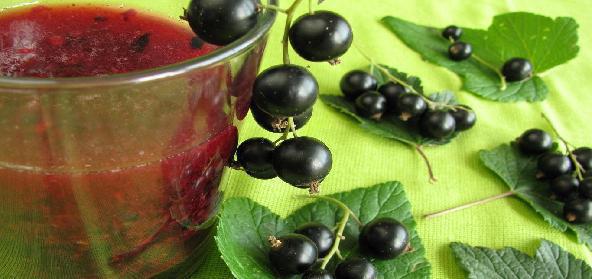
Harmful properties of black currant
Black currant berries contain too much vitamin C. Products high in ascorbic acid are considered allergenic. If you abuse them, the baby will suffer from diathesis. This can cause allergic dermatitis. However, if you eat berries in moderation, there will be no harm to the baby.
It should be said: if you buy black currant berries out of season, you risk poisoning, since they contain a large amount of nitrates. The berries will be beneficial if they are dry, large and ripe. Overripe blackcurrants lose their beneficial properties.
Blackcurrant during breastfeeding can be harmful if the mother suffers from thrombophlebitis. It increases blood clotting due to vitamin K and phenol in the composition. In addition, the berry should be used carefully by a mother who has increased acidity or has a stomach ulcer. If these recommendations are not followed, the disease may worsen.
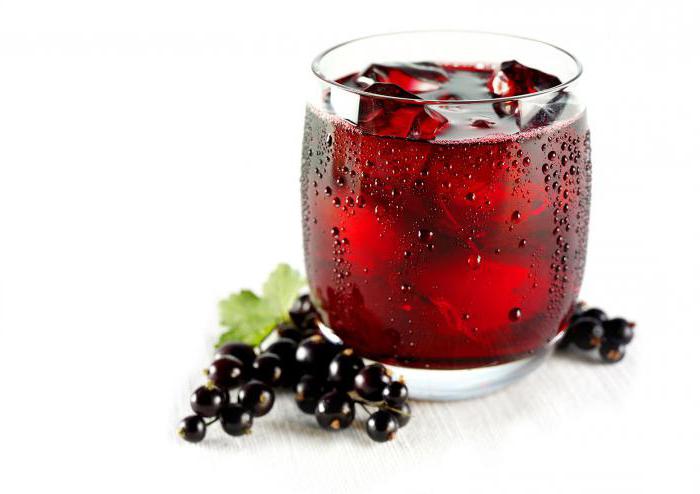
Features of using currants during breastfeeding
Currants are allowed for a nursing mother, but they need to be eaten in limited quantities. The berry contains a lot of vitamin C, which potentially causes allergies. Whether the fetus will provoke a negative reaction in the baby in the form of spots on the skin depends on the amount of currants eaten by the mother and the individual “response” of the baby’s body.
To avoid allergies, caution is required when consuming the product during lactation. You need to introduce currants into your diet starting with 5-6 berries. During this period, eliminate other potential allergens. After eating the fruits, observe the reaction of the child’s body for 1-2 days. If everything is ok, gradually increase the dosage.
Attention! Try currants during lactation 2-3 months after birth.
If after the berries eaten by the mother, the baby “sprinkled”, stop the “experiment” and return to currants in a month. During this time, the baby will grow up, the body will strengthen, and the reaction to the fruits will become positive.
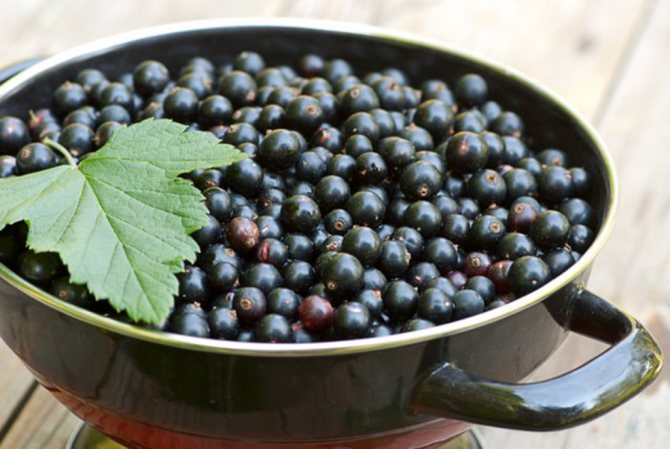
Blackcurrant during lactation
Can I have black currants while breastfeeding? Berries are very beneficial for mother and child during breastfeeding. Thanks to them, a woman will always have a sufficient amount of milk, because currants increase lactation. Eating berries reduces the risk of respiratory diseases, as they increase immunity. It is a natural source of vitamins and minerals. By eating a few berries a day, you can forget about store-bought vitamins. Currants are rich in iron and magnesium, so they will help to recover after natural and pathological childbirth and increase hemoglobin.
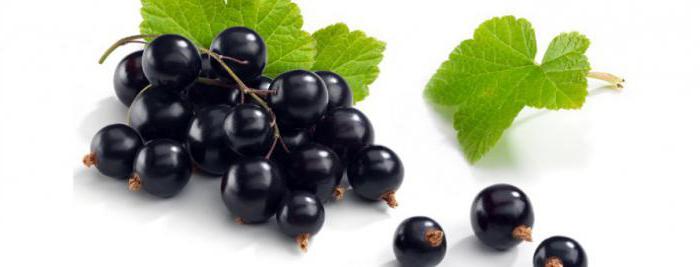
How to check if your baby is allergic to blackcurrant berries?
Can I have black currants while breastfeeding? It is known to be a potential allergen. Before enjoying healthy berries during lactation, a nursing mother should check whether the newborn has a reaction to them. When introducing black currants into her diet, mother should not eat anything new except these berries. The baby should also not be introduced to new complementary foods. To begin with, the mother should try eating a few berries in the morning. The next day it will be clear whether the berries cause allergies or not. If the child’s skin remains clean, then the berry can be safely taken, gradually increasing its amount. If a rash or digestive problems appear, it should be immediately excluded from the nursing mother’s diet. You need to wait until the baby’s gastrointestinal tract gets stronger.
If the baby is prone to allergies from birth, this berry must be administered very carefully. Only in the absence of an allergic reaction can the mother eat currants in small quantities.
Five minutes and you're done
The easiest and at the same time healthy recipe is also called a five-minute recipe, since the main part of the heat treatment requires just that much time. To prepare you will need:
- 1.5 kg sugar;
- 1 kg of berries;
- glass of water.
First you need to sort out and thoroughly wash the currants themselves, placing them on paper towels and a clean rag to dry. While the workpiece is drying, it’s time to make a syrup, which involves mixing the sweetener with water and then bringing it to a boil in an enamel container.
After boiling, place the berries in the pan and wait for the semi-finished product to boil again. Then all that remains is to boil the mixture over low heat for about five minutes, and pour the resulting result into sterilized jars. It is necessary to seal with metal lids if further storage in the basement is planned. If you intend to store it in the refrigerator, you can limit yourself to nylon analogues.
Five minutes has its own secret, which will be appreciated by true aesthetes who cannot tolerate the shriveling of berries. To prevent this, you must first place the gifts of the gardens in boiling water for a minute, then drain them in a colander.
For very lazy individuals, he recommends cooking the mixture in a slow cooker using an identical scheme. Moreover, it would be more practical to pass the workpiece through a meat grinder. The pectin-rich delicacy will turn into a beautiful jelly. It can then be used for filling in baked goods, which are prepared in a bread machine to speed up the cooking process.
In what form can blackcurrant be consumed?
The greatest amount of useful substances is contained in fresh currants. It is especially useful during its maturation period. It concentrates the maximum composition of vitamins and minerals. A handful of ripe berries will provide the daily requirement of ascorbic acid. At the same time, black currants have a small amount of calories. There are only 45 of them in 100 grams of berries.
Overripe berries are less healthy. If you freeze black currants for the winter, there will also be benefits from consuming them. It can be added to tea, pie, cottage cheese. Blackcurrant jam, juices, fruit drinks and compotes are no less useful. They diversify the nutrition of a nursing mother. However, these products should not be abused. They contain sugar, so they are higher in calories and can harm your figure. And sucrose is a common cause of diathesis in infants.
Contraindications for currants
Each fruit has value, however, provided that there are no acute diseases in the body. So, currants are contraindicated for:
- Ulcer.
- For hepatitis.
- With the development of thrombophlebitis.
- In the presence of high acidity of the stomach.
In addition, allergy sufferers may develop allergy attacks if they are abundantly saturated with currants.
In order for currants to bring only benefits, especially during a period such as lactation, you need to eat them thoughtfully. For example, it is necessary to monitor the amount of food eaten, and also, after introducing it into the diet, monitor the reaction of the child’s body.
The first portions should be divided into 6 berries per day, gradually increasing it, provided that there is no reaction on the child’s body.
It is worth noting that Dr. Komarov insists that a mother’s diet should be varied. This means that it is necessary to introduce all foods - vegetables and fruits, meat and dairy products, gradually and in normal quantities. Naturally, it is necessary to monitor the reaction of the small organism.
The introduction of berries should be gradual. A child's body gets used to everything very slowly. That is why for the first three months you should refrain from eating berries during this period. Moreover, currants have a laxative effect.
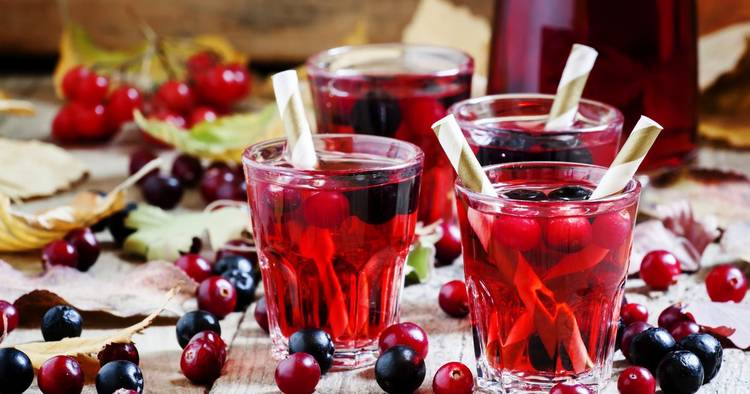
I started eating everything already in the maternity hospital. In terms of the fact that the diet had everything. Of course, I looked at the child’s reaction, stool and all that. We were born on March 19. In July, I already calmly ate all the fruits in season.
I gave birth at the end of December, the baby is very sick. And I was very weak, my hair was coming out in clumps. On top of everything else, I have kidney problems. I drank currant juice before – before pregnancy. As soon as the berry appeared in the garden, it was gradually introduced into the diet. Everything is fine for both me and the child.
Girls, be careful. Currants are unique to everyone; currants caused a terrible allergy in my child. The rash did not go away for 2 weeks.
Good for those who have never experienced allergies. But my child is an exception from this list. The first thing I realized after currants appeared in my diet is that they cause constipation. This is a terrible thing that tormented the baby. First physiologically, and then I just got used to doing an enema. Further, more - there was a rash all over my body. This despite the fact that it is hot. In short, horror. There is only one conclusion - if necessary or desired, introduce fruits, vegetables, berries into the diet - do everything gradually.
Blackcurrant jam
Is it possible to make blackcurrant jam while breastfeeding? Usually it does not cause allergies in the baby. But each baby's reaction to this sweetness may be different. It is possible that diathesis will appear. You can use blackcurrant jam while breastfeeding, but not much. It contains a lot of sugar, which can cause fermentation in the stomach. This may cause tummy problems for the newborn. Jam is a high-calorie product. You can’t eat a lot of it, otherwise you will gain extra pounds. Before eating this delicacy, it is better to warm it up so that the sugar crystals dissolve.
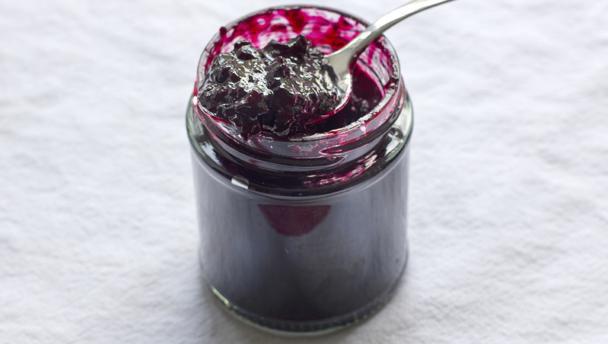
What jam is possible and what is not for breastfeeding
Almost all jam ingredients have allergens, so, as in the case of fresh fruits, it is best to start with apple jam or marmalade.
Most likely, an allergy can be caused by a dessert made from blueberries, black or red currants, and honeysuckle. After eating a few spoons, you should make sure that the jam does not cause an allergy in the child.
When the baby reaches six months, you can introduce new jam products, for example, cherries, apricots, and fragrant strawberries. It is better to prepare cherry jam while breastfeeding by removing the seeds. Exotic varieties of jams, for example, from kiwi, citrus fruits, are best left for the child’s older age.
We recommend reading: Butter during breastfeeding
Raspberry is usually introduced into the diet, provided that the woman does not have an allergic reaction to the berry.
It is definitely better to eat homemade jam instead of store-bought, because it is unknown what quality the ingredients were and how the jam was made. But homemade sweets also have a number of necessary conditions.
Doctors do not recommend consuming jam that is prepared quickly or simply pureed fruits, berries with sugar; such products can cause fermentation in the stomach, which will lead to gas formation.
If the jar has been stored for a long time, the contents may become sugary. Then it is recommended to heat the jam before use, for example, by placing the jar in hot water or simply warm it slightly on the stove, in the microwave, so that the amount of sugar becomes smaller.
Under no circumstances should a nursing woman eat sour or fermented treats.
You can also add jam when baking, to pies, buns, pies, even cakes, to make fruit drinks, jelly. In this way, mom will also make up for the lack of sweets and receive a lot of useful substances that are present in fruits and berries.
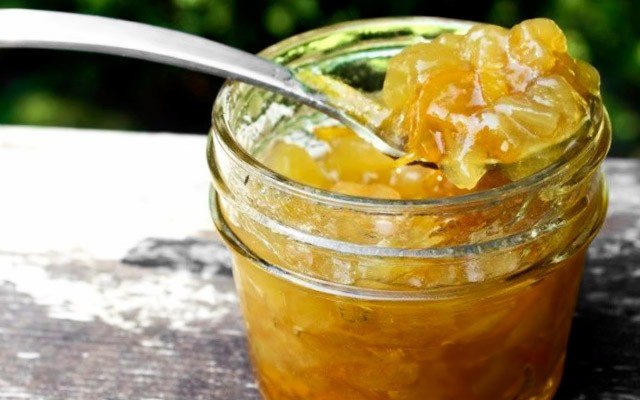
From gooseberries
Gooseberries have a sweetish taste with a slight sourness, jam is almost the same. After cooking and canning, the beneficial properties of the berry are retained. Gooseberries help normalize metabolism, improve immunity, and have a beneficial effect on the nervous and digestive systems.
The main quality is that the jam leaves the antibacterial properties of the berries, which are necessary for colds. But with all the advantages of gooseberries, they have a drawback - a laxative effect, so you should not consume them too much.
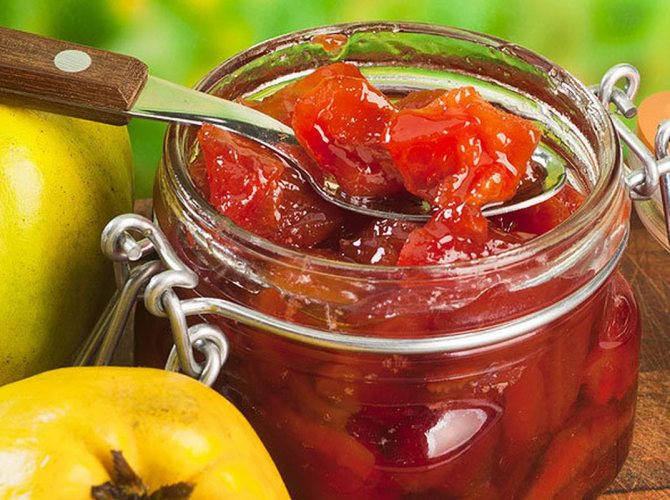
From quince
Quince has a slightly astringent, tart taste and the fruit acts on the body in a similar way. It can stop bleeding, including uterine bleeding, this is important after childbirth. It can help with diarrhea, and will also replenish iron deficiency, which was depleted during pregnancy. But at the same time, dishes made from it are undesirable for people with a high risk of blood clots. Even with excessive consumption of quince, a person may experience constipation.

Dogwood
The jam has a beautiful rich dark burgundy color and a pleasant sour taste. Dogwood contains succinic, malic, ascorbic acid and essential oil. The berries are valued for their tonic and strengthening qualities; the berries reduce gas formation in the stomach. But due to the properties of the berries, the baby may become constipated, so you need to eat it in small portions, and when the child is three months old.
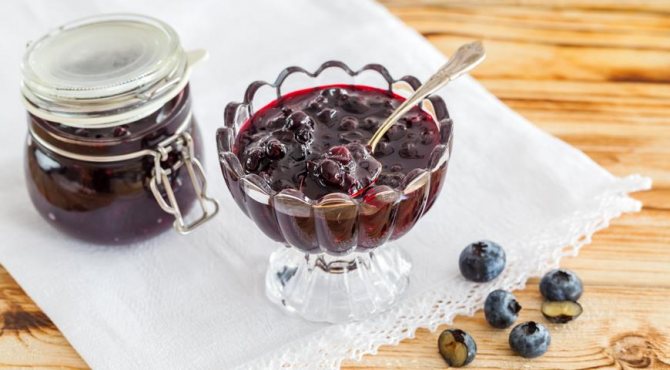
Blueberry
Blueberry jam has a strong aroma of wild berries, it is dark blue in color with a pleasant taste. Blueberries are recommended for vision problems and cardiovascular diseases. Berries help regulate the functioning of the pancreas and normalize intestinal function.
We recommend reading: Pea soup for breastfeeding
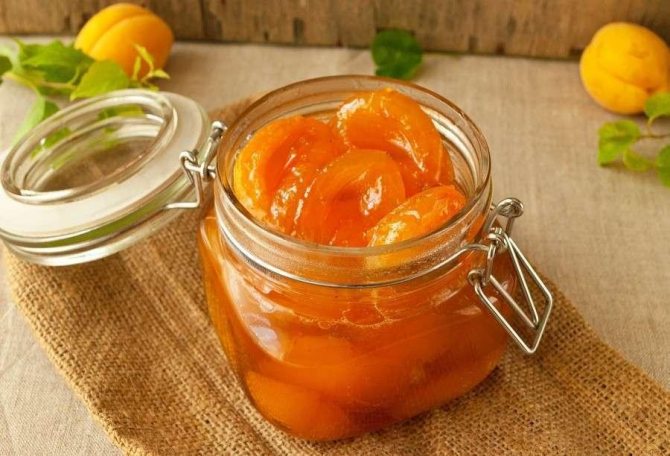
Apricot
Apricots are full of vitamins and contain large amounts of potassium and magnesium. Fruits will help normalize metabolism and remove harmful components from the body. However, apricots are famous for their laxative effect, and jam retains this property. Doctors advise eating it for constipation; however, be careful when consuming it if a nursing mother suffers from an upset stomach. It is recommended to try apricot jam if the baby is already three months old.
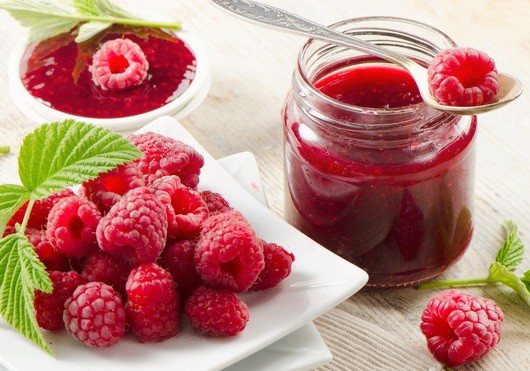
Raspberry
Raspberries are the most popular and effective remedy against colds. It contains a lot of vitamin C and salicylic acid, which makes raspberries a medicinal plant. Salicylic acid is found in many medications, and it also has anti-inflammatory and antiseptic effects.
Jam is suitable as a good helper in the fight against colds, because due to taking antibiotics, a nursing mother will have to stop feeding.
Raspberries also contain copper, potassium, manganese, cobalt, molybdenum - these substances are necessary for the body. In addition to berries, you can use leaves and twigs; they should be brewed like tea.
But despite all the beneficial properties of raspberries, they are considered a strong allergen, so unless there is a clear need, it is better to start eating jam when your baby is six months old.
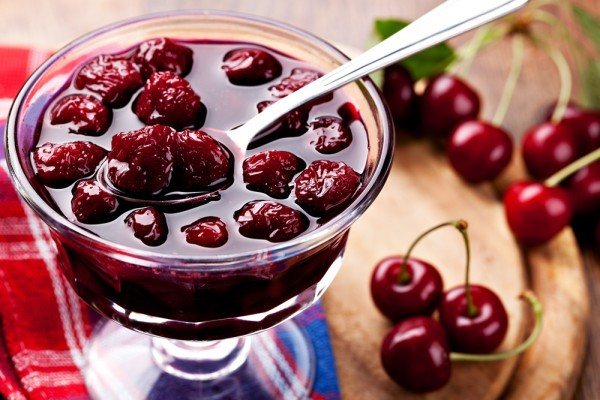
Cherry
Cherry is rich in vitamins B, E, P, which make it a healthy berry, especially for the body of a nursing mother. It helps those suffering from anemia and atherosclerosis. With proper heat treatment, cherries retain some of the beneficial substances, for example, iodine, iron, folic acid, and fiber. Cherry strengthens the immune system, increases the quality and quantity of breast milk, and helps the proper functioning of the stomach and intestines.
It is important to know that due to the dark color of the berries, cherries are considered an allergen, so it is better to start consuming them no earlier than the baby’s three months. Also, the jam must be boiled well, and not just ground with sugar, otherwise it can cause stomach discomfort.
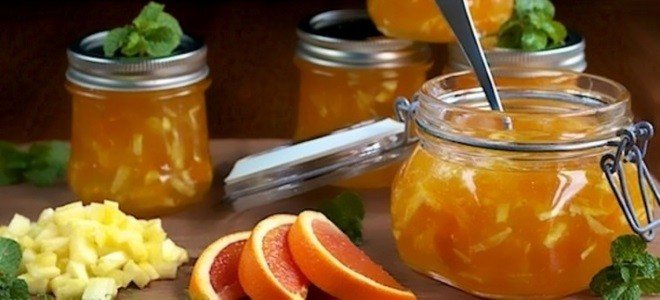
Apple
Apple jam is considered the most popular, since apples grow everywhere, in every summer cottage, but the main advantage is associated with the beneficial properties of the fruit. Mothers include apples in their diet because of the minimal risk of allergies in their infants, as well as because of the large amount of vitamins, minerals, and pectin; for the same reasons, apple jam is valued during lactation. However, for desserts it is better to use varieties with yellow or green skin.
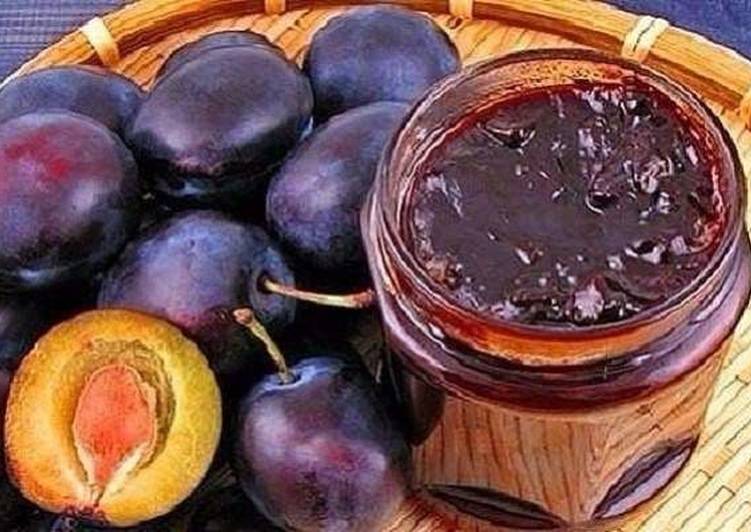
Plum
By consuming plums, a nursing woman receives a whole range of essential vitamins and minerals - zinc, calcium, magnesium, vitamins E, B, K. Plum has a positive effect on blood quality and improves the elasticity of blood vessels.
Jam or jam usually has a thick consistency and a pleasant aroma. However, the fruits have a laxative, diuretic effect, so people suffering from gastrointestinal disorders should not eat them in large quantities; it will be useful for improving blood vessels and the circulatory system, strengthening the immune system.
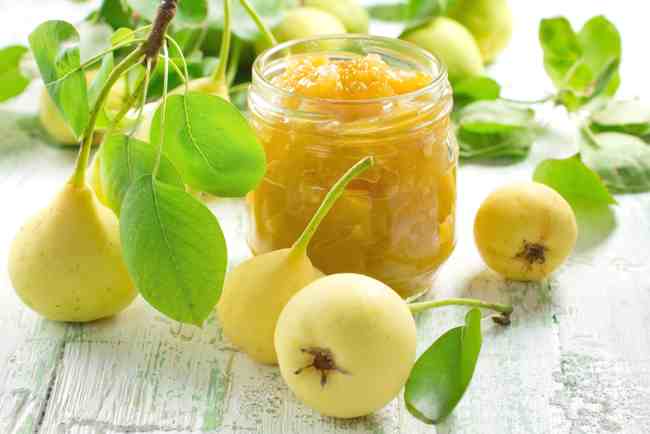
Pear
Pear is a fruit filled with vitamins, it contains E, A, P, and minerals: magnesium, iron, iodine. Jam made from this fruit is considered safe for breastfeeding. By the way, after heat treatment, the fruit retains many beneficial properties, for example, jam helps get rid of heartburn, will cheer you up, it can be used as an antipyretic, it has a slight diuretic effect, so it is used for kidney diseases. Also, pear jam can restore the elasticity and firmness of the skin and restore its radiance.
We recommend reading: Corn porridge during breastfeeding
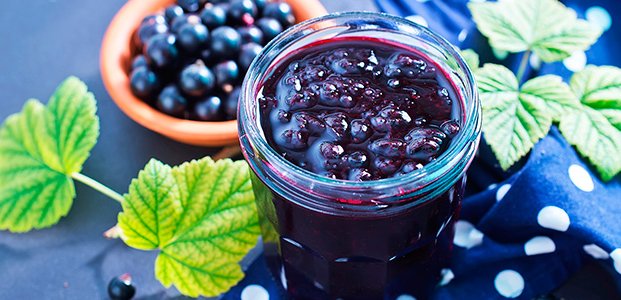
Currant
Currants are indispensable during the lactation period, as they significantly increase milk flow. Doctors recommend berries as a good remedy against anemia, hypertension, gastritis, and even atherosclerosis.
The composition of currants is distinguished by a large amount of vitamin C and B5, which helps metabolism and also supports the immune system during the cold season. It is better to use currant jam from three months.
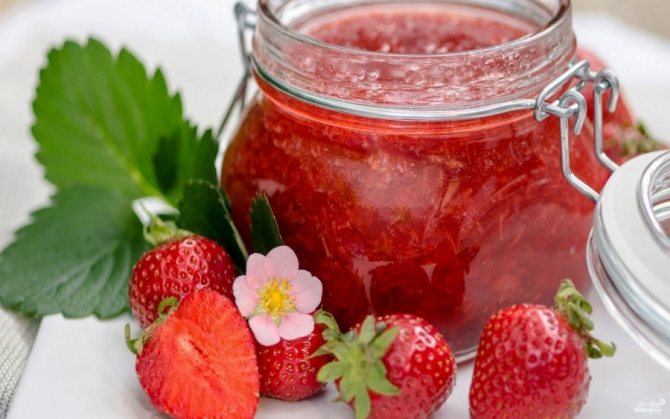
Strawberry and strawberry
Strawberries and wild strawberries contain many useful substances and vitamins. Strawberries can help lower blood pressure and renew the blood. The berry also supports a weakened body, and the presence of vitamins B, C, folic acid, pectin, carotene makes strawberry and strawberry jam beneficial for the brain and nervous system, and strawberry jam is also very aromatic. The mother should consume products made from these berries no earlier than a month and a half after giving birth, but only if the baby does not develop a rash or itching.
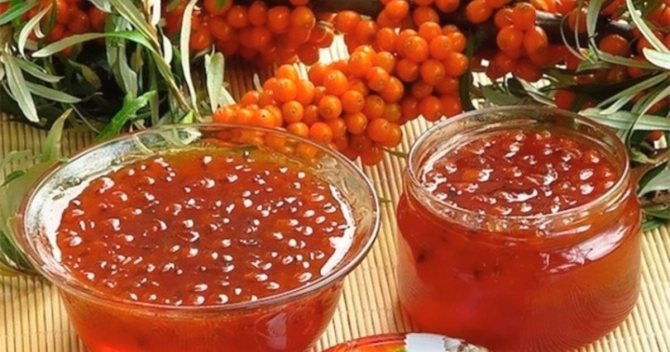
Sea buckthorn
Sea buckthorn helps fight inflammation, diseases of the oral cavity, it will effectively cope with coughs, and help with fever. The berries are rich in vitamins C, B6, E, A. It is especially important that sea buckthorn jam will make mom calmer and more resistant to stressful situations.
You can start eating sea buckthorn jam from two months.
Blackcurrant juice
Morse is not only a tasty drink, but also healthy. It perfectly quenches thirst. Is it possible to drink blackcurrant juice while breastfeeding? It will be useful if you prepare it at home and do not overuse added sugar. Store-bought berry drinks contain preservatives and dyes. They are harmful to mother and child. Industrial drinks are strictly prohibited for crumbs. Fruit juice should be drunk only when the newborn does not have an allergic reaction. It is better to do this in the first half of the day.




